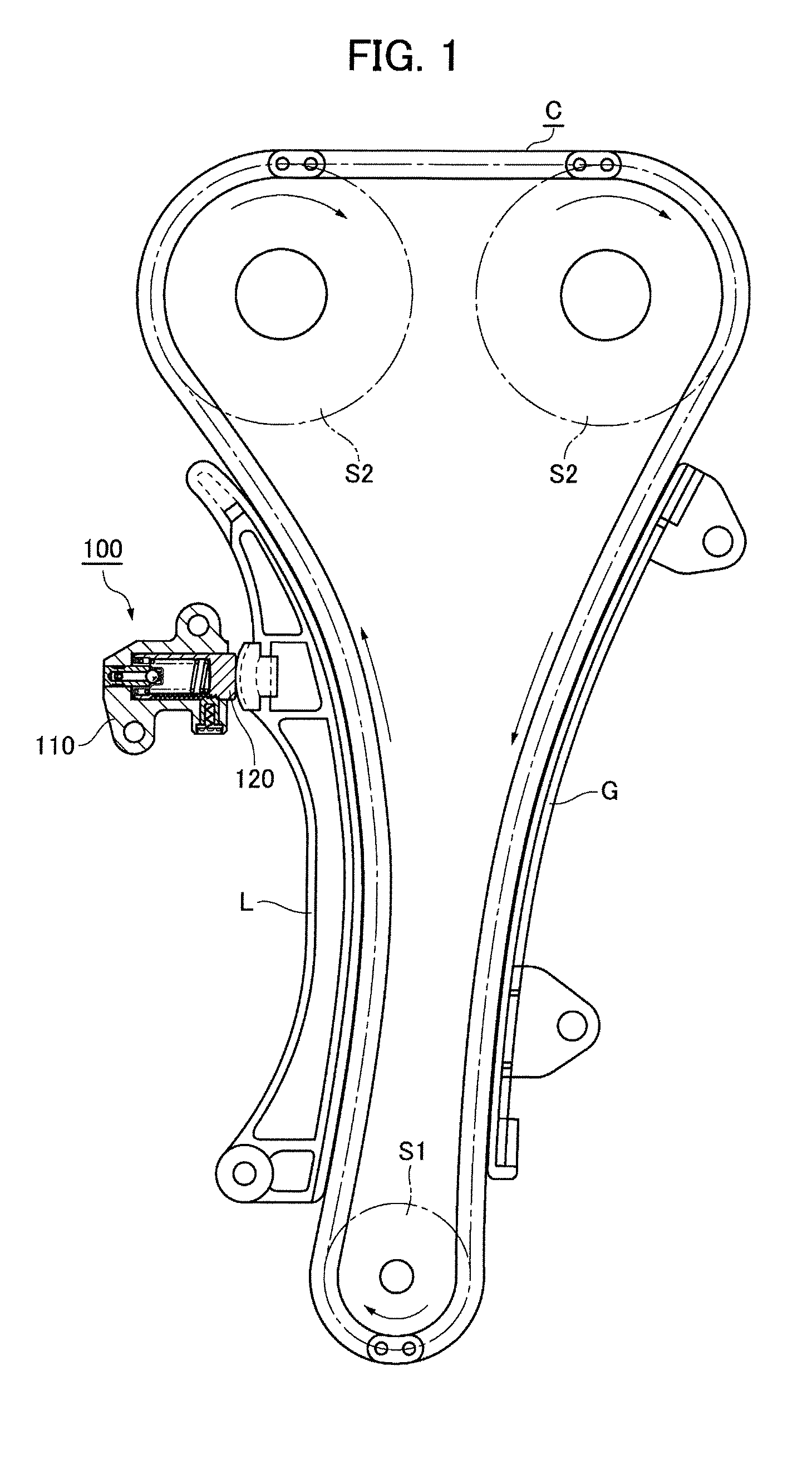Ratchet-type tensioner
a ratchet-type, tensioner technology, applied in the direction of belts/chains/gears, mechanical instruments, belts/chains/gears, etc., can solve the problems of excessive tension, wear, noise, and eventual seizing of prior-art tensioners, and achieve excellent durability, reduce noise, and avoid excessive impact on ratchet-biasing springs.
- Summary
- Abstract
- Description
- Claims
- Application Information
AI Technical Summary
Benefits of technology
Problems solved by technology
Method used
Image
Examples
Embodiment Construction
[0045]As shown in FIG. 1, the ratchet-type tensioner 100 of the invention is attached to an engine (not shown) on a slack side of a timing chain C which is engaged with a sprocket S1 rotated by a crankshaft and a pair of driven sprockets S2 fixed to camshafts.
[0046]The ratchet-type tensioner 100 has a housing 110 and a plunger 120 that slidably projects out of a front surface of the housing 110. The plunger 120 applies tension to the slack side of the timing chain C, i.e., the side that travels from the crankshaft sprocket S1 toward one of the camshaft sprockets S2. The plunger applies tension through a movable lever L on which the chain slides, and which is pivoted on the engine block, and presses the plunger 120 at a location remote from the lever's pivot axis.
[0047]The basic configuration of the housing 110 of the tensioner 100 may be one that supplies oil under pressure from an oil pump (not shown) to the oil supply passage 111 formed within the housing 110, or one that has a co...
PUM
 Login to View More
Login to View More Abstract
Description
Claims
Application Information
 Login to View More
Login to View More - R&D
- Intellectual Property
- Life Sciences
- Materials
- Tech Scout
- Unparalleled Data Quality
- Higher Quality Content
- 60% Fewer Hallucinations
Browse by: Latest US Patents, China's latest patents, Technical Efficacy Thesaurus, Application Domain, Technology Topic, Popular Technical Reports.
© 2025 PatSnap. All rights reserved.Legal|Privacy policy|Modern Slavery Act Transparency Statement|Sitemap|About US| Contact US: help@patsnap.com



